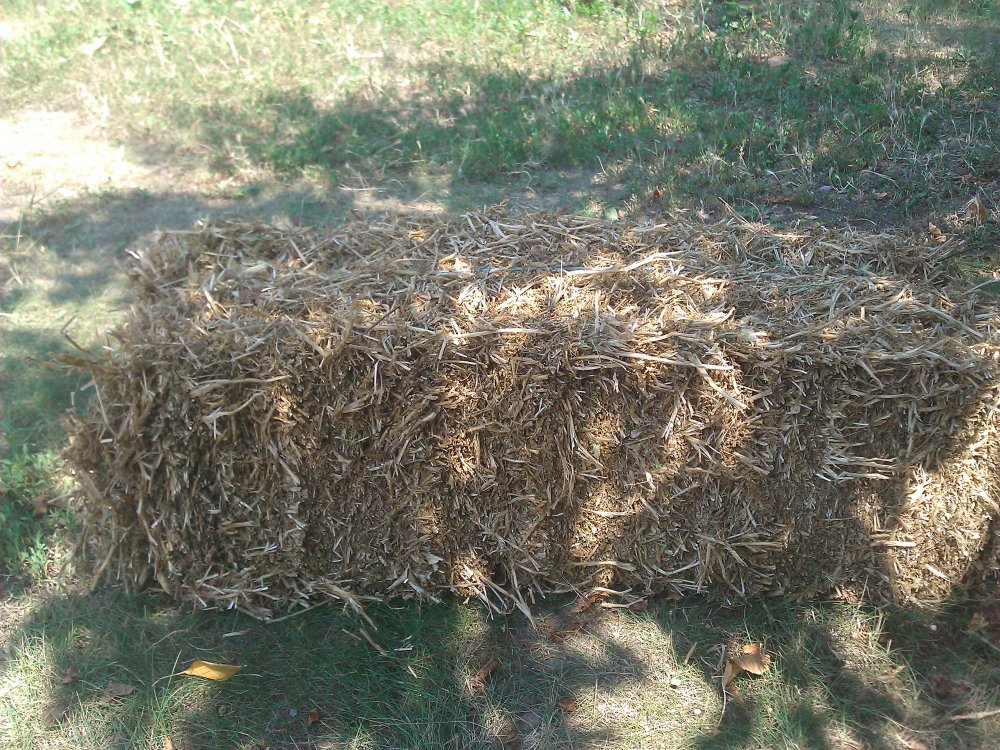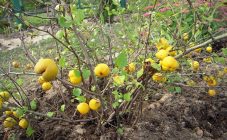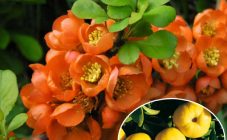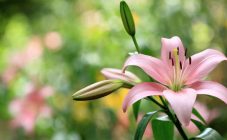Content:
A charming flower, as if descended into a flower garden from an old engraving - Japanese or autumn anemone, attracts attention with its airy, delicate beauty. Unlike species that bloom at an earlier date, it does not require special attention, and therefore it is happily grown for autumn flower garden decoration.
Japanese anemone - plant description
A charming bush, sometimes quite tall, with three-lobed leaves and flowers of various sizes, grouping on smooth stems, blooming from the second half of summer. Japanese anemone is a herbaceous perennial. Other names are lumbago (usually wild), anemone. It is believed that the cultivation of the plant is the merit of Japanese gardeners, where it appeared in the 7th century. Until now, botanists continue to argue about the birthplace of a delicate flower.
All garden anemones look great in flower beds, border decoration. More often grown for cutting - the flowers remain fresh for up to a month.
Although all parts of the plant contain toxic substances, it is actively used by traditional medicine for various diseases, ranging from a common cold to oncology. True, most of the medicinal properties are inherent in wild-growing species.
Plant characteristic
Anemone is a herbaceous perennial, its distinctive feature is a horizontally creeping rhizome, fleshy, brown. Species representatives usually grow up to 80 cm, varietal or hybrid ones can be slightly lower - about 70 cm, or much higher - up to 130-140 cm. The leaves are cut into three parts, serrated at the edges. Their standard color is green-gray, in “purebreds” they have a silvery or bluish tint.
The anemone growing in its natural environment forms simple flowers, located in small groups on a branched stem, the color is usually light-colored - white, pink. Garden views pamper with more saturated shades and semi-double.
Types and varieties
Japanese is a representative of the autumn anemone species. The group also includes Grape-leaved, Felted, Hybrid and Hubei anemone. All of them are sold by shops and nurseries under the general name "Japanese", since only a specialist will notice the difference outwardly. Regarding the Japanese and Hubei anemones, there is no consensus yet whether they belong to the same species, or to different ones. It is important for gardeners that growing and caring for them do not differ.
A brief description of the prominent representatives of the Japanese anemone:
- anemone Prince Heinrich, 60-80 cm high, on fertile soils up to 120 cm. Flowers, semi-double, deep pink, sometimes with purple or crimson tint, corolla diameter up to 20 cm. Flowering begins in late August;
- anemone Pamina, tall, up to 90 cm. The diameter of semi-double flowers is 7-8 cm, the color is red-burgundy. Early flowering, from mid-July, lasts about a month;
- the Slendens anemone reaches 60-70 cm in height. The flowers are simple, 6 cm in diameter, crimson red. The buds open from the second half of August to the end of September;
- anemone Wyrlwind (Wyrlwind) meter height. Semi-double white flowers, 8 cm in diameter, begin to bloom in late summer and end with the first frost;
- anemone Khubeyskaya Prekoks up to 50 cm tall. The flowers are simple, bright pink in color.Bloom from August to September. The variety is frost-resistant (up to - 29 ° С);
- Lady Julia's anemone Pretty is a compact fairly new hybrid. Height up to 50 cm, flower diameter 5-6 cm. Corolla semi-double, pink. Differs in the duration of flowering - from August to mid-October, frost resistance (zone 5);
- anemone Crisp, about 60 cm high, is highly decorative before flowering - lace corrugated leaves are bordered with a cherry strip. Flowers 7-8 cm in diameter are painted with a bright pink color. Withstands frosts down to - 34 ° С (4 climatic zone);
- anemone Monte Rose, up to 75 cm tall, flowers are large, double, the color of the petals is delicate pink. Flowering duration 6 weeks, from August to September. Frost resistant.
Anemone Japanese: planting and care in the open field
The main feature of the lumbago is its unpretentiousness, however, when determining where to plant it, they take into account the specific requirements:
- the view feels comfortable in partial shade and in open sunny areas. However, the location of flowers is influenced by the climate: in the south, they prefer planting in places shaded during the daytime, in temperate and northern latitudes, they need sun throughout the day;
- only hybrid forms make high demands on soil fertility, varietal and species develop normally on soils with moderate nutrient content. The pH is neutral, good drainage is required.
Planting dates are spring, when the snow melts. The soil is well loosened before planting, freed from the roots of predecessors, stones. If the soil is depleted, rotted manure or compost is introduced for digging. If necessary, deoxidize with dolomite flour or wood ash.
Planting is usually carried out with pieces of rhizomes, before that they are placed in water at room temperature for several hours. Then they take out, cut the dried ends of the roots, plant them, deepening by 5 cm. In group placement, the distance between the planting holes is made equal to the maximum height of the plant, because the diameter of the rosette is usually the same as the vertical dimension.
After planting, the rhizome is covered with earth, watered, mulched. A layer of mulch is usually made 5-6 cm so that weeds do not break through. The best material is leaves, tree bark, dry chopped grass, imitating forest floor.
Basic care activities
It is easy to take care of the plant, the most important thing for him is adherence to the watering regime.
The irrigation schedule for anemone depends on the time of year: in the spring, water it weekly, if there is no precipitation; in summer, daily irrigation is required, if the intense heat coincided with the formation of buds, moisture may be required in the morning and evening; in the fall, before the end of flowering, they are watered less often, but the soil is not allowed to dry out.
For the first year after planting, there is no need to fertilize the chamber. From the second year, they are fed with mineral fertilizers for flowering plants at the beginning of budding. In the fall, wood ash is poured; before winter, the rhizomes are mulched with humus, which provides an organic charge for the next season.
Weeding is carried out regularly, as weeds appear.
The transplant is carried out no more often than once every 5-6 years.
Preparing for winter
The process is different for the southern and temperate or northern regions. In the south, the aboveground part is cut off, a layer of humus or matured compost is laid out at least 10 cm.Plants growing in cool climates are not cut off - the remnants of leaves serve as additional protection from the cold, the stems contribute to the retention of snow, the mulch is spread 15 cm.
All first-year plants need additional shelter from the cold.It is enough to throw dry foliage, straw, spruce branches on them.
Major diseases and pests
The main diseases of anemone are fungal, while solitary plants almost never become infected. For prevention, group plantings are regularly treated with fungicides, observe the irrigation regime, and prevent waterlogging of the soil.
Pests - slugs, caterpillars eating foliage. To protect the lumbago from slugs without chemicals, mulch from eggshells, needles, dusting the surface of the earth with hot pepper helps. It is advisable to use insecticides against caterpillars or pick them by hand.
Nematodes cause great harm to flowers. Special means are used against them - nematicides, or plants are planted that repel the pest - dwarf varieties of marigolds, calendula, creeping nasturtiums.
Anemone does not cause problems for gardeners, but the question often arises - why anemone does not bloom. The answer is simple - either they grow in dense shade, which is not suitable for charming Japanese women, or they lack nutrition, then they need to be fertilized.
Growing Japanese anemones is a simple, enjoyable process. Yes, the beginning of flowering with ornamental greenery, they create a lovely backdrop for other garden mono- and perennials. And in combination with the Hubei and other species blooming at an earlier date, you can make an exquisite composition of gentle, airy flowers replacing each other.

















